The problem of reading old data Samsung 840 Evo affected 840 and other solid state
Disk performance dependent on temperature
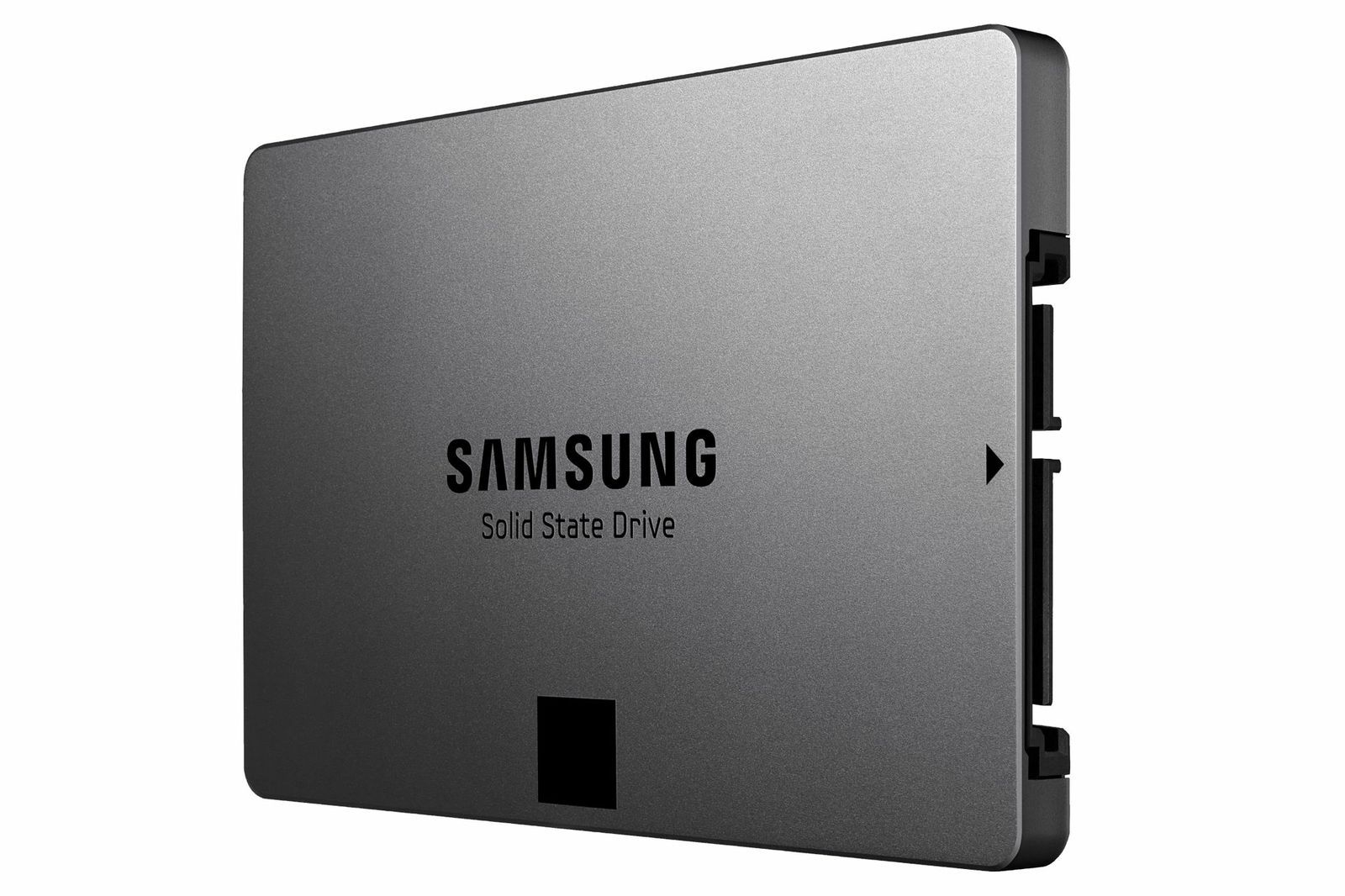 Last fall, it became known that the Samsung 840 Evo SSD loses speed when reading old data. The information recorded more than a month ago could only be read with a drop in performance, and Samsung soon released a patch with an update to the firmware, which was designed to solve this problem. Then it was indicated that the voltages for cells with old data were incorrectly calibrated. As it turned out later, the problem still remained, and the second update , which periodically overwrites the old data in the background, should solve it . Per Hansson found out that other Samsung discs with TLC NAND memory are also subject to degradation.
Last fall, it became known that the Samsung 840 Evo SSD loses speed when reading old data. The information recorded more than a month ago could only be read with a drop in performance, and Samsung soon released a patch with an update to the firmware, which was designed to solve this problem. Then it was indicated that the voltages for cells with old data were incorrectly calibrated. As it turned out later, the problem still remained, and the second update , which periodically overwrites the old data in the background, should solve it . Per Hansson found out that other Samsung discs with TLC NAND memory are also subject to degradation.Samsung 840 Evo - drives from 120 gigabytes to 1 "honest" terabyte, available in form factors for connecting via SATA and mSATA. Immediately after the appearance, thanks to an aggressive pricing policy and good characteristics, they were one of the best solid-state for home use. After some time, users began to notice something strange: the data recorded a few months ago could no longer be read at full speed. Sometimes the reading speed dropped to 30 MB / s. But recently recorded data was always read at a speed of up to 500 MB / s - as fast as any benchmark that writes a new block of information for the test shows. It took only a few weeks to show a drop in reading speed. By October 2014, a discussion threadoverclock.net spanned a hundred pages. So six months ago, the problem manifested itself. Samsung quickly recognized the problem and promised to release a patch. By the end of October, a special utility was released for both 2.5-inch drives (EXT0CB6Q) and mSATA drives (EXT42B6Q). The program performed two simple steps:
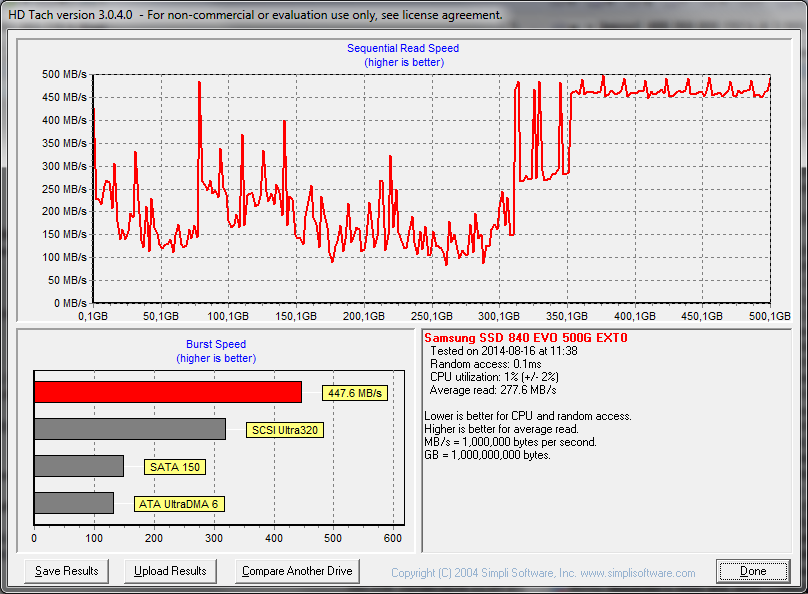
- The disk firmware was updated. The new one took into account the inevitable shift in voltage levels that occurs in all NAND cells as they age. This effect was enhanced by the number of bits stored in each cell: only one bit is stored in the SLC NAND, and its two states can be easily distinguished. In MLC NAND, each cell stores two bits, and it becomes more difficult to read them, but the amount of data stored doubles. In TLC NAND, the correct calibration of eight voltage levels is required immediately, but the data volume increases by one and a half times.
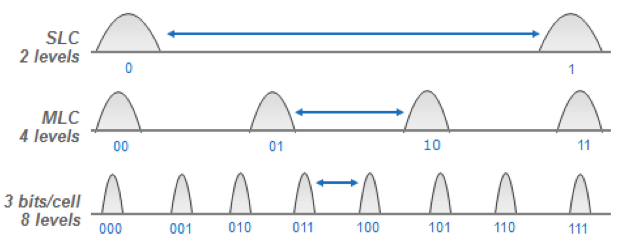
According to the manufacturer, an error crept into the algorithm that read the data, which led to the fact that the old data became harder and harder to read. Reading speeds of old files fell from about 500 MB / s to less than 50 MB / s - 10 times. Detecting this problem was difficult because benchmarks usually write new data to read the speed test and read it immediately. It is easy for users to notice the problem: operating system files, installed programs and applications, documents are recorded once and are used daily. - The second step completely overwritten all the data on the drive. That is why the speed of performance of Performance Restoration Software directly depended on the volume of the drive and the information recorded on it. Since a drop in speed is required for the manifestation of the order of 8 weeks, for some time it was unclear whether the firmware update works.
As it turned out later, the first attempt to rectify the situation was not successful. The problem began to reappear. Samsung began work on a new version of the firmware (EXT0DB6Q), but this time instead of changing the algorithms for reading old data, it was decided to put in the drives periodic overwriting of old files in the background. This solution cannot be called elegant: the NAND-memory cells wear out from writing and erasing, so the life of the drive will drop. But, as a study by Tech Report shows , modern solid-state drives have a good resource.
At the time of writing Hansson, the update came out only for the 2.5-inch model 840 Evo, and the owners of the drive form factor mSATA have to be patient. Also new firmwaredoes not work well with the implementation of the TRIM command in the Linux operating system family (the firmware does not support queued TRIM, although the opposite is indicated). An important detail of the latest update is the recognition of a flaw not in the firmware of drives, but in Samsung TLC NAND chips. Probably, the manufacturer cannot write such an algorithm that could take into account the aging of information in the cells, so it is proposed to rewrite them.
Samsung claims that the problem is only in the 840 Evo. But this is not so. There are other versions for embedding, for example, Samsung PM851, which gets into Dell products. In forums, users reportabout the same problems with read speed. Embedded versions of Samsung drives can also be found on the Razer Blade Pro and Microsoft Surface Pro 3 laptops. In the latter case, Samsung released a firmware update, but later deleted it from the site without explanation.
Another potentially affected product might be the Samsung 845DC Evo , a drive version for enterprises, as indicated on the site, specifically designed for “intensive reading applications”. The 845DC Evo uses the same TLC NAND chips as the 840 Evo - K90KGY8S7M-CCK0. Samsung is likely to choose the best components for industrial solid state drives, so it may take time to show a drop in reading speed and start a heated discussion on the forums.
Finally, there is the 840 model (without Evo in the name), which first used TLC NAND memory. At the moment, a firmware update for this drive has not been released. Although a drop in read speed is evident here, Samsung does not recognize the problem. Earlier, Samsung Germany said that the old data on the 840 reads more slowly, but later this was denied in company reports. Here is the answer of Samsung to the question of PC Per.
PC Per: Will there be a firmware update for other Samsung solid state TLCs that also demonstrated this read speed problem? If so, in what time frames and for which models will new versions of firmware be released?
Samsung: This issue is reported only for 840 Evo SSDs.
Hansson cites data that he collected from user posts from forums:
- The 840 Evo uses TLC NAND with a 19 nm process technology and takes 8 weeks to degrade.
- The usual 840 is based on a 21nm TLC NAND; 40 weeks is required for aging.
Below is the drop in reading speed on the 840. The test was performed by Hansson on a Lenovo ThinkPad T530 laptop running Windows 7. The Plextor M5M mSATA was used as the main drive, the Samsung 840 as an additional one. In HD Tune, a block size of 64 KB was set. Empty 40 GB is not affected by degradation of read speed, so they achieve peak performance of 375 MB / s. You can see that the first part is experiencing a particularly strong reading speed drop - this happened due to the cloning of a regular hard drive on a Compaq laptop, and the first 13 GB contains a recovery partition. In these 13 GB that have never been overwritten, a peak of two empty gigabytes is noticeable. Faced with reading 840 Evo problems, the Techie007 user at overclock.net created a very useful utility.
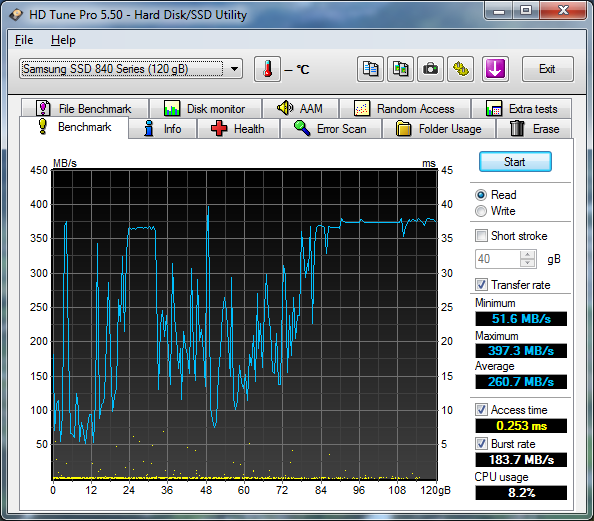
SSD Read Speed Tester , as a result of which you can get a graph of the performance of reading individual files depending on their age. Hansson also checked his 840, and concluded that the reading problem was confirmed. The visualization of the result is limited to 99 weeks, and the data on the disk was older. Hansson plotted a graph in Excel using raw data; days are plotted on the abscissa. When analyzing the results of the data, it becomes clear that the older the file, the worse it is read. For comparison: this is the result of the Samsung 840 Pro, which uses MLC NAND memory cells that store two bits each and require calibration of only four voltage levels. There is no drop in reading speed on it.
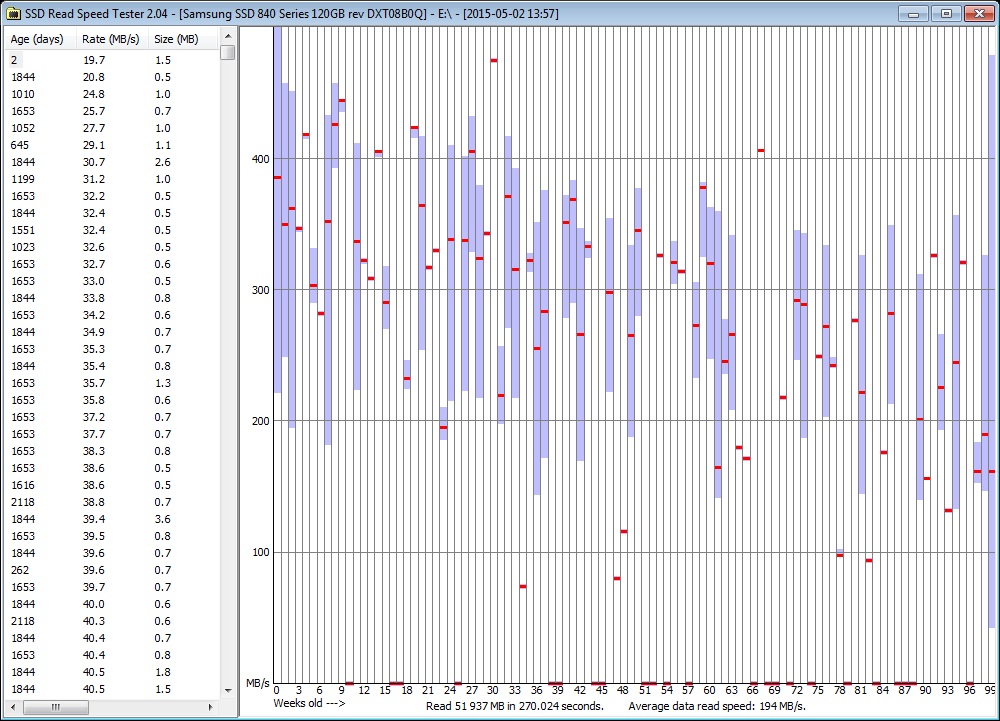
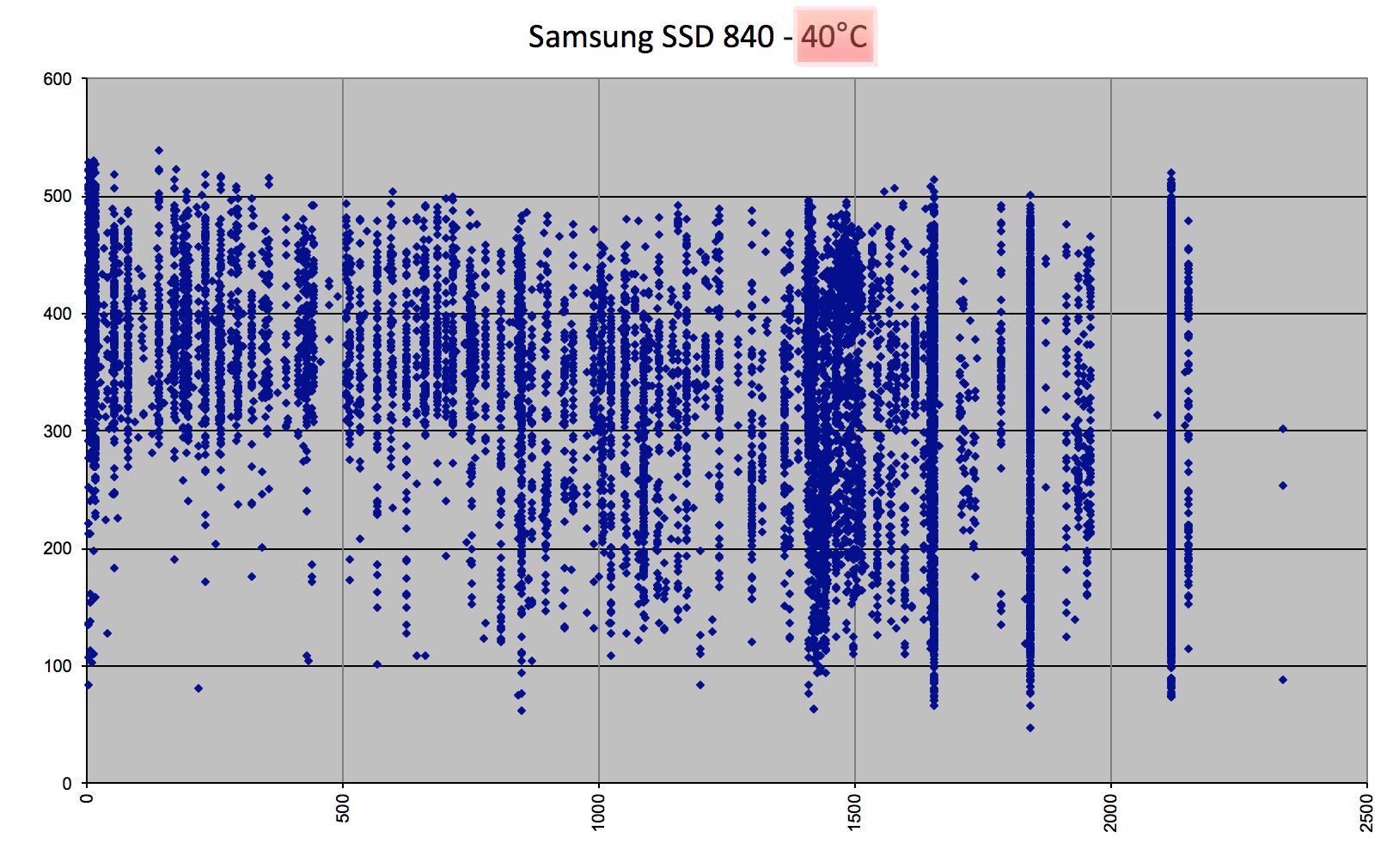

Another interesting observation was the dependence of performance on temperature. The benchmark results “floated”, and Hansson found out that this is due to the temperature of the drive. The warmer the 840, the better the old data is read. But this may not be true for all varieties of solid state bodies - they can be calibrated to a different temperature. It is also impossible to raise the temperature above the threshold: if the controller overheats , it will limit the data transfer rate. These phenomena once again emphasize how complicated the correction of the reading algorithm is. At 15 ° C, the speed is noticeably lower than at 40 ° C. The hotter the drive, the better the old data is read, but there is no improvement in peak read speed.
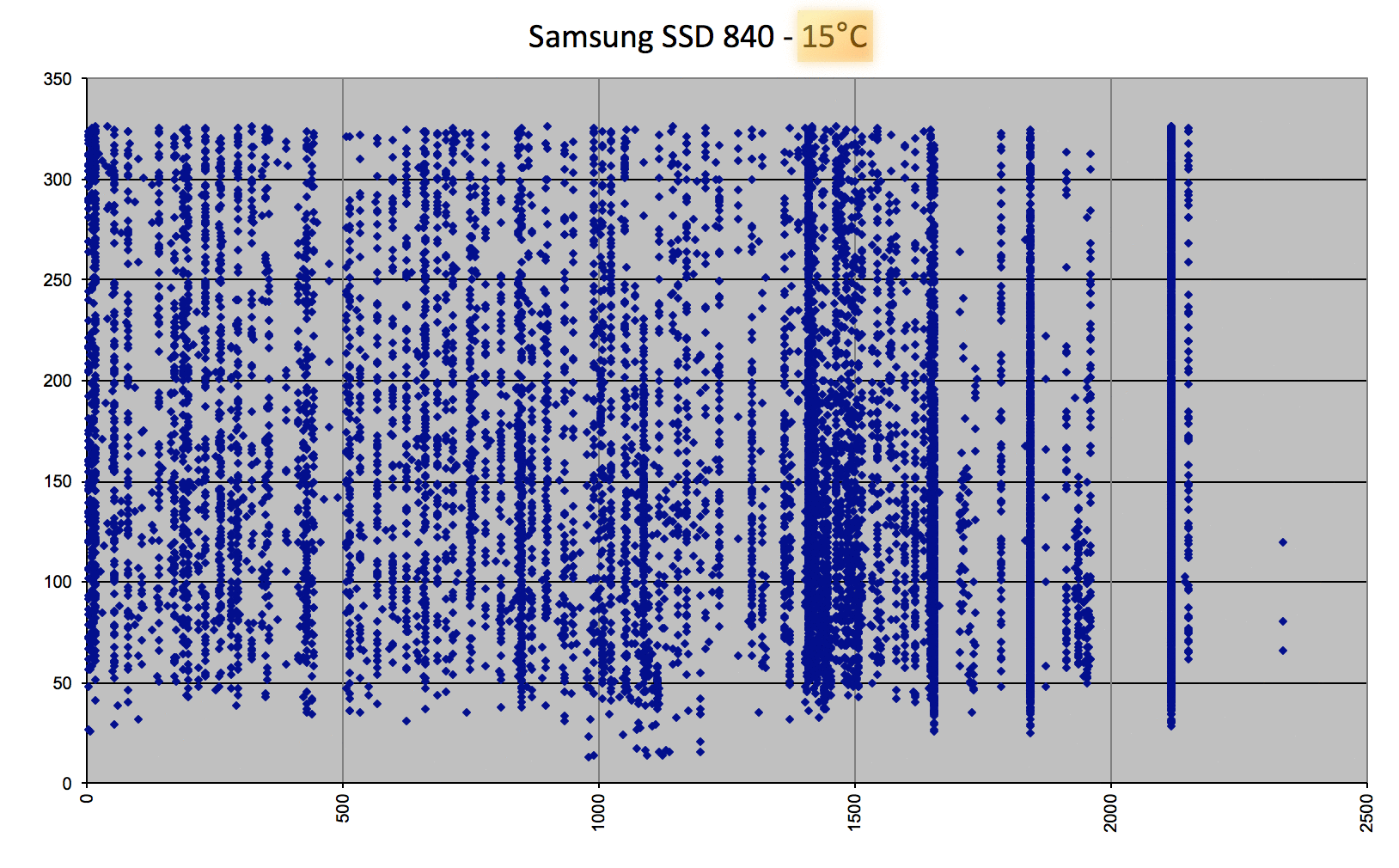
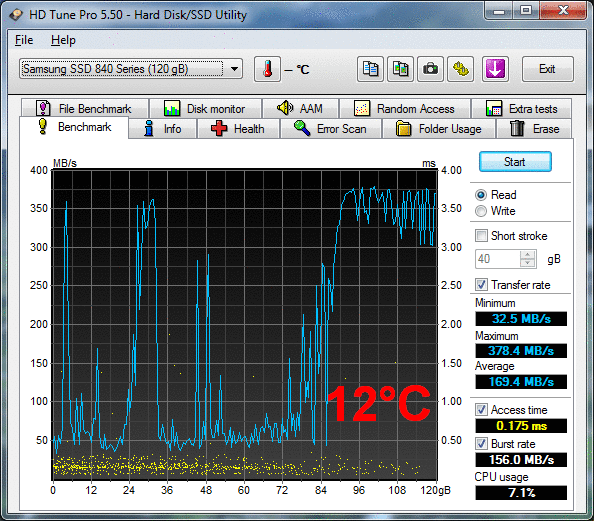
It is not known whether Samsung will recognize a reading problem for other TLC NAND SSDs, or whether the Korean giant will continue to reject user complaints. Firmware update for Samsung 840 Evo is available in the program Samsung Magician 4.6, which can be downloaded at http://www.samsung.com/samsungssd/ , or in the same place as ISO-images.

